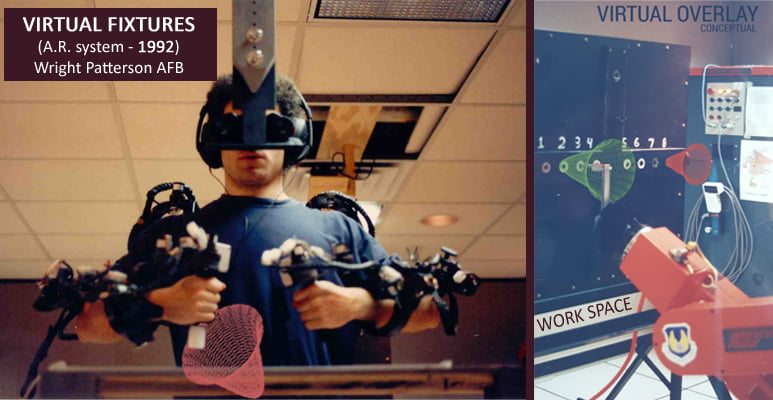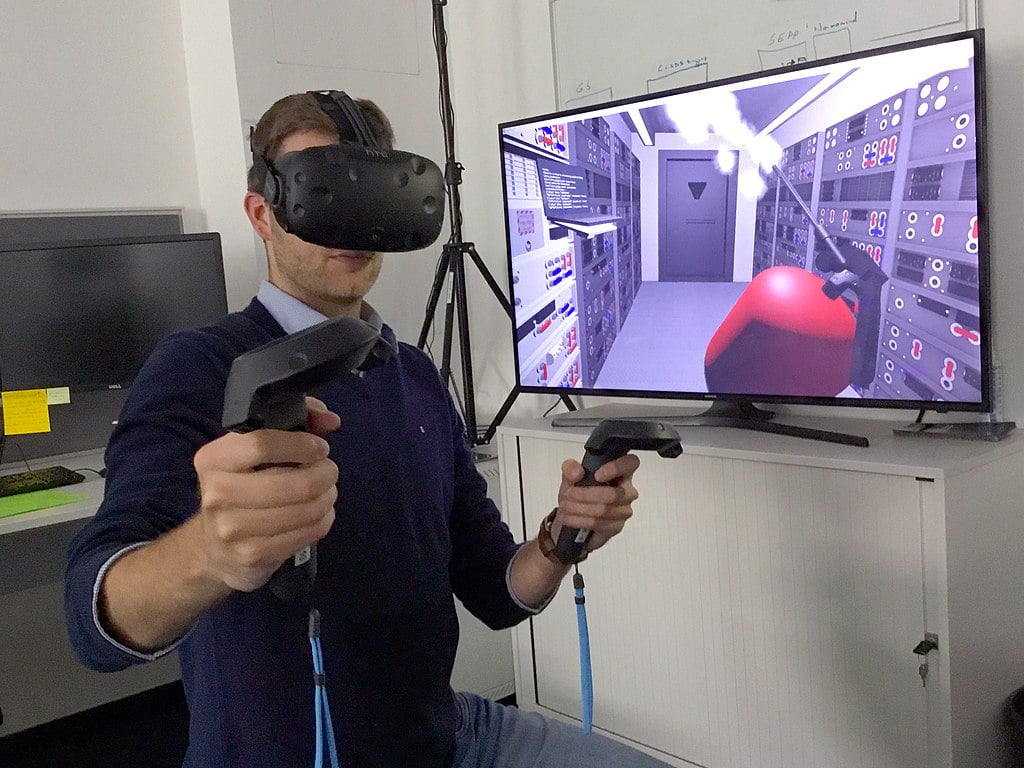In recent years, Virtual Reality (VR) and Augmented Reality (AR) technologies have transitioned from science fiction concepts to integral parts of our technological landscape. Their capabilities to create immersive experiences have seen breakthrough achievements in various fields, from education and healthcare to retail and entertainment. The rapid development of VR & AR, reshaping industries with immersive experiences, promises to revolutionize everything from education and healthcare to retail and manufacturing. This blog delves deeper into the latest advancements in VR and AR, examines their impacts across different sectors, and offers insights into the future prospects of VR/AR adoption rates worldwide.
Breakthrough Achievements in VR and AR Technology
1. AR Glasses
Augmented Reality glasses have made significant strides, moving from bulky prototypes to sleek, wearable tech. Companies like Microsoft with HoloLens and Google with Google Glass Enterprise Edition are at the forefront. These AR glasses overlay digital information onto the real world, providing users with an enhanced perception of their surroundings. The latest models boast improved battery life, higher-resolution displays, and more robust processing power, making them suitable for professional use in fields like architecture, engineering, and healthcare.

2. VR Headsets
Virtual Reality headsets have evolved dramatically, with major players like Oculus (Meta), HTC Vive, Sony PlayStation VR leading the charge. These headsets offer high-definition displays, superior motion tracking, and greater comfort for prolonged use. Innovations such as eye-tracking, haptic feedback, and wireless connectivity have further enhanced the user experience, making VR more accessible and engaging than ever before.

3. Mixed Reality Experiences
Mixed Reality (MR) combines elements of both VR and AR to create an interactive environment where physical and digital objects coexist and interact in real-time. This technology has seen advancements in both software and hardware, enabling more intuitive and immersive experiences. Companies like Magic Leap and Microsoft’s HoloLens are pioneers in this field, offering platforms that support a wide range of applications from gaming to industrial design.

Impact Across Various Sectors
Education: VR and AR are revolutionizing education by providing immersive learning experiences. VR can transport students to historical sites, inside the human body, or to outer space, making complex subjects more accessible and engaging. AR can overlay educational content onto textbooks or classroom environments, providing interactive and visual aids that enhance understanding and retention.
Healthcare: In healthcare, VR, and AR are used for surgical training, patient rehabilitation, and mental health therapy. Surgeons can practice complex procedures in a risk-free virtual environment, while AR can assist in real-time during surgeries by overlaying critical information. Mental health practitioners use VR to create controlled environments for treating conditions such as PTSD and anxiety disorders.
Retail: Retailers are leveraging AR to enhance the shopping experience. AR apps allow customers to visualize products in their own homes before purchasing, such as seeing how furniture would look in their living room. These technologies help bridge the gap between online and in-store shopping experiences, offering convenience and personalization.
Entertainment: The entertainment industry has been quick to adopt VR and AR, with video games, movies, and live events being transformed by these technologies. VR games offer immersive experiences that place players directly in the game world. Live events and sports are increasingly using AR to provide real-time information and interactive experiences for fans. The potential for creating entirely new forms of interactive storytelling is immense.
Military Training Simulations: The military uses VR and AR for training simulations that provide realistic, immersive environments for soldiers to practice and hone their skills. These simulations can replicate a wide range of scenarios, from combat to disaster response, offering a safe and cost-effective training method. AR can also assist in the field, providing soldiers with real-time information and navigation aids.
Future Prospects of VR/AR Adoption
VR and AR are poised for significant growth in adoption rates over the coming years. As the technology becomes more affordable and accessible, its use cases will expand across various industries. Education and healthcare are poised to be major growth areas, driven by the increasing demand for innovative and effective solutions. The retail and entertainment sectors will continue to evolve, offering new and enhanced experiences for consumers.
The global VR/AR market is projected to grow exponentially, with investments pouring in from both the public and private sectors. The development of 5G networks will further boost VR and AR adoption by providing the necessary bandwidth and low latency required for these technologies to function seamlessly.
Differences between Virtual Reality (VR) and Augmented Reality (AR)
| Feature | Virtual Reality (VR) | Augmented Reality (AR) |
|---|---|---|
| Definition | A fully immersive experience where the user is placed in a virtual environment. | An experience where digital elements are overlaid on the real world. |
| Environment | Completely virtual; replaces the real world with a simulated one. | Real-world environment with digital overlays. |
| Equipment | Requires VR headsets like Oculus Rift, HTC Vive, or PlayStation VR. | Requires AR devices such as AR glasses (Microsoft HoloLens) or smartphones/tablets. |
| Interaction | Users interact with a fully digital environment using controllers or hand tracking. | Users interact with both digital and real-world elements, often using touch or gestures. |
| Applications | Gaming, virtual tours, training simulations, education, virtual meetings. | Navigation, retail (virtual try-ons), education, real-time information overlays, gaming. |
| Immersion Level | High immersion, isolating users from the real world. | Low to moderate immersion, enhancing the real world rather than replacing it. |
| Mobility | Often requires stationary setup or limited movement area. | Highly mobile, can be used anywhere in the real world. |
| Examples | Oculus Rift, HTC Vive, PlayStation VR. | Pokémon GO, Google Glass, Microsoft HoloLens. |
| User Experience | Typically involves a completely new and artificial experience. | Enhances and supplements the real-world experience. |
| Use Cases in Training | Complex simulations like flight simulators, military training. | Real-time assistance and information, such as medical procedures or industrial maintenance. |
Conclusion
VR and AR technologies have come a long way, with significant advancements and breakthrough achievements that are transforming various sectors. From enhancing education and healthcare to revolutionizing retail and entertainment, the impact of VR and AR is far-reaching. As adoption rates continue to rise, these technologies will become even more integrated into our daily lives, paving the way for a future where the virtual and real worlds seamlessly blend together. The possibilities are endless, and the journey of VR and AR is just beginning.
TO LEARN MORE ABOUT, CLICK BELOW
- Embracing the Future of Artificial Intelligence – Krutrim AI
- Artificial Rain: Enhancing Precipitation Through Cloud Seeding
- BrainBridge: Pioneering the Future of Head Transplants
- Neuralink: Bridging the gap between brain and computer
- EctoLife: The World’s First Artificial Womb Facility
- Mobile Gaming: Trends Shaping the Future
- The 10 Most Popular YouTube Channels
- Beyond the Brochure: VR & AR Reimagine Hospitality
- The Future of Traffic Signal Systems With AI
- Claude 3.5 Sonnet: Frontier Intelligence at 2x the Speed
- Understanding Docker: Software Development and Deployment
- G-Assist: NVIDIA’s Gaming Assistance
- Google DeepMind’s V2A
Frequently Asked Questions (FAQs)
Virtual Reality (VR) is a technology that creates a fully immersive, simulated environment, isolating users from the real world and allowing them to interact with this digital environment using VR headsets and controllers.
VR works by using headsets with screens in front of the eyes, which display a 3D environment. Sensors track the user’s head and hand movements, allowing interaction with the virtual world.
Applications: Video games, employee training, architecture, therapy, and educational videos.
Examples:Hardware: Meta Quest 2, 3, and Pro, PlayStation VR, and Valve Index.
Software: BeatSaber, Half-Life: Alex, and No Man’s Sky VR.
Purpose: AR adds digital layers on top of real-world footage, often viewed through smartphones.
Applications: Video games (e.g., Pokémon GO), e-commerce, education, marketing, and interior design.
Examples:Hardware: Apple Vision Pro headset and most modern smartphones, tablets, and laptops.
Software: Pokémon GO, IKEA Studio, and Snap AR.
Purpose: MR combines elements of both VR and AR, allowing physical and virtual objects to interact simultaneously.
Applications: Gaming, employee training, and education.
Examples:Hardware: HoloLens 2, Meta Quest 2, 3, and Pro.
Software: PianoVision, VR Painting, and First Encounters.







I don’t think the title of your article matches the content lol. Just kidding, mainly because I had some doubts after reading the article. https://accounts.binance.com/cs/register?ref=S5H7X3LP